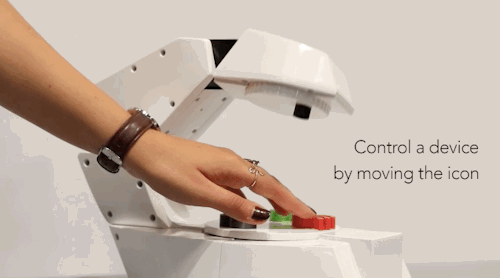At What Point Did Britain And France Stop Always Being On The Brink Of War With Each Other?
At what point did Britain and France stop always being on the brink of war with each other?
He [Wilhelm II] returned to Europe [from his tour of the Holy Land] in autumn to find Britain on the point of war with France over a solitary little fort in the middle of nowhere in southern Sudan called Fashoda. Fashoda was the point where French plans to dominate Africa east to west, from Dakar to Djibouti, intersected with British plans to connect South Africa to Cairo.
A French troop occupied the fort; a British one sat outside it – very politely. The two commanders took tea together.
The quote is taken from George, Nicholas and Wilhelm: Three Royal Cousins and the Road to World War I by Miranda Carter.
More Posts from Stubborn-turtle-blog and Others




Elevated walkway and visitor centre added to 12th century abbey ruins by Binario Architectes »
Making a thread to help you educate all the "name one thing women invented" "women can't do science" "what have they ever contributed?" people
































EVERYBODY READ THIS
I want to see an adventure story set in medieval Bologna
Or Assassin's Creed



The city of Bologna in the 12th-13th century - the closest we can get to a medieval skyscraper city; because nobles used to build high towers as a symbol of power and also for offensive/defensive purposes, at one point there were around 100 such towers.
Keep reading

The first worry I have follows from one of the five principles of robotics, which states: robots should not be designed in a deceptive way to exploit vulnerable users; instead their machine nature should be transparent.
To design a gendered robot is a deception. Robots cannot have a gender in any meaningful sense. To impose a gender on a robot, either by design of its outward appearance, or programming some gender stereotypical behaviour, cannot be for reasons other than deception – to make humans believe that the robot has gender, or gender specific characteristics.
When we drafted our 4th ethical principle the vulnerable people we had in mind were children, the elderly or disabled. We were concerned that naive robot users may come to believe that the robot interacting with them (caring for them perhaps) is a real person, and that the care the robot is expressing for them is real. Or that an unscrupulous robot manufacture exploits that belief. But when it comes to gender we are all vulnerable. Whether we like it or not, we all react to gender cues. So whether deliberately designed to do so or not, a gendered robot will trigger reactions that a non-gendered robot will not.
Our 4th principle states that a robot’s machine nature should be transparent. But for gendered robots that principle doesn’t go far enough. Gender cues are so powerful that even very transparently machine-like robots with a female body shape, for instance, will provoke a gender-cued response.
My second concern leads from an ethical problem that I’ve written and talked about before: the brain-body mismatch problem. I’ve argued that we shouldn’t be building android robots at all until we can embed an AI into those robots that matches their appearance. Why? Because our reactions to a robot are strongly influenced by its appearance. If it looks human then we, not unreasonably, expect it to behave like a human. But a robot not much smarter than a washing machine cannot behave like a human. Ok, you might say, if and when we can build robots with human-equivalent intelligence, would I be ok with that? Yes, provided they are androgynous.
My third – and perhaps most serious concern – is about sexism. By building gendered robots there is a huge danger of transferring one of the evils of human culture: sexism, into the artificial realm. By gendering and especially sexualising robots we surely objectify. But how can you objectify an object, you might say? The problem is that a sexualised robot is no longer just an object, because of what it represents. The routine objectification of women (or men) because of ubiquitous sexualised robots will surely only deepen the already acute problem of the objectification of real women and girls. (Of course if humanity were to grow up and cure itself of the cancer of sexism, then this concern would disappear.)
What of the far future? Given that gender is a social construct then a society of robots existing alongside humans might invent gender for themselves. Perhaps nothing like male and female at all. Now that would be interesting.
Alan Winfield is Professor in robotics at UWE Bristol. He communicates about science on his personal blog… read more
Very important to keep in mind when you've hit a plateau in anything
Improving Your Relationship With the Person in the Mirror - Dance Comp Review
New Post has been published on http://dancecompreview.com/improving-your-relationship-with-the-person-in-the-mirror/
Improving Your Relationship With the Person in the Mirror
Do you hate looking at yourself on film or in the mirror? Are you always focusing on what you need to improve, without taking pride in your accomplishments? If you answered yes to either of the above, you may want to make some changes to how you perceive yourself.
An often overlooked part of learning to dance is the importance of staying conscious, not only of what you need to improve, but also of the progress you’ve made. Without this balance, many dancers develop or reinforce negative beliefs about themselves, which may have no basis in reality.
It’s important to remember that what we see is often coloured by the opinions we already hold about ourselves. A person who believes they are fat for example, is likely to still hold that belief even after loosing 50 pounds. In order to develop a more healthy relationship with yourself, you first need to change these limiting beliefs.
Giphy
First: Is the mirror distorted?
Sometimes, it really is the mirror’s fault! A warped mirror can make people appear bigger or smaller, create the impression that they are not balanced well, or make correct technique look strange. Before reading on, try remembering if there is certain mirrors you tend to like dancing in front of more than others, and why.
Giphy
Is your perception of yourself distorted?
This is by far the more likely situation. There’s nothing wrong with wanting to improve yourself of course, and you can’t do that without being aware of what you want to correct. But this can work against you when the self-criticism becomes demoralizing, when it starts to hurt your self-esteem and self-perception.
You might have a distorted perception of yourself if:
You receive compliments about your dancing with skepticism.
You find yourself focusing on the flaws in your appearance and technique, and ignoring what looks good.
You complain frequently about how bad a dancer you are.
You often leave a practice feeling sad, depressed, or angry at yourself.
If a performance or competition goes well, you assume you just ‘got lucky’.
You hang around other dancers or people who complain about themselves a lot.
You spend a lot of money on your appearance, and it still doesn’t seem like enough.
You use words like ‘always’ and ‘never’ when critiquing yourself (ex. ‘I always screw up X, I’ll never get it right.’)
You take constructive criticism very personally.
You quickly give up if a practice isn’t going well.
You feel like this article is telling you to stop working hard.
You compare yourself unfavourably to others
Giphy
If you want to start creating a more positive (and honest) image of yourself, try these tips:
Find at least one thing you did well after each practice. Thank yourself for doing it well.
Ask your instructor to let you know where you’ve made progress, and trust their opinion! Remember that they are the experts.
Ask yourself why you feel fat, clumsy, etc., and using only hard facts, what you know that backs that up. Compare that to why you might be the opposite.
Imagine yourself as a champion dancer. Think of how this person would walk, talk, feel, and dance. Practice being this person in your daily life.
Write down an empowering sentence about yourself, and repeat it daily. For example: ‘Every day, I am becoming a more skilled and competent dancer.’
Make a plan with your instructor, and set some concrete goals you can measure your progress by.
Smile more! Studies show just by smiling, you can trick your body into feeling happier, which boosts your self-confidence.
Stop comparing yourself to anyone but yourself from 24 hours ago.
Practice letting go of your mistakes, either by making it funny, or quickly refocusing on the next movement.
Reward yourself after doing something well, even if only by allowing yourself to feel a little pride.
Surround yourself with positive people.
These mental hacks will allow you to start seeing yourself in a better light. And that in turn, will help you find the motivation you need to become the dancer of your dreams. Go get ‘em!
Author: Ian Crewe Photography: Pavel Yuryev Exclusively for Dance Comp Review
I feel like this belongs in a more futuristic animated movie






Bolles + Wilson. Suzuki House. Tokyo. Japan. photos/ drawing: Ryuji Miyamoto/ Bolles + Wilson. - architecture classic
This would have been so empowering for my ALS-stricken grandfather

Obi was built by Jon and Tom Dekar, the father-son duo that founded Obi parent company DESῙN in 2010. They spent the next six years refining Obi’s design, securing investors, sourcing suppliers, and testing prototypes. The first Obi prototype was designed in 2006 by Jon, a University of Dayton engineering student, who saw the challenges faced by people with disabilities as varied as his aging grandfather and a 6-year-old girl with Arthrogryposis.
“Every day, millions of people must be fed by caregivers, and they find the experience to be conspicuous and frustrating,” Jon said. “Feeding oneself is a basic human need, and there was no good solution available. I became inspired to change that.”
Scientific Women You Haven’t Heard of (Yet): Louise Pearce

Louise Pearce is best known for her work that lead to a cure for sleeping sickness. Pearce traveled to what is now the Democratic Republic of the Congo to test the arsenic based cure, tryparsamide, in cooperation with a hospital in Léopoldville that was coping with an outbreak of sleeping sickness. This trip helped establish parameters for treatment (such as safe and optimum dosages) of sleeping sickness with tryparsamide. Pearce also used rabbit colonies to study syphilis and cancer over generations. Pearce was lesbian and a feminist and lived with Sara Josephine Baker and Ida A.R. Wylie. Pearce’s curriculum vitae is impressive and lists Standford University, Boston University and Johns Hopkins University as her alma maters.
Learn more: (x) (x) (x)
Previous Installments: Lynn Conway, Noella Marcellino, Tu Youyou
About the series: (x)
-
 trillcess liked this · 5 years ago
trillcess liked this · 5 years ago -
 pancakes40 liked this · 7 years ago
pancakes40 liked this · 7 years ago -
 whatevsbla liked this · 8 years ago
whatevsbla liked this · 8 years ago -
 divebardivas liked this · 8 years ago
divebardivas liked this · 8 years ago -
 read-every-dayy-blog reblogged this · 8 years ago
read-every-dayy-blog reblogged this · 8 years ago -
 salytierra reblogged this · 8 years ago
salytierra reblogged this · 8 years ago -
 read-every-dayy-blog reblogged this · 8 years ago
read-every-dayy-blog reblogged this · 8 years ago -
 sillybil2 liked this · 8 years ago
sillybil2 liked this · 8 years ago -
 stubborn-turtle-blog reblogged this · 8 years ago
stubborn-turtle-blog reblogged this · 8 years ago -
 stubborn-turtle-blog liked this · 8 years ago
stubborn-turtle-blog liked this · 8 years ago -
 velvet3w3 liked this · 8 years ago
velvet3w3 liked this · 8 years ago -
 auror-demigod-jedi-avenger--blog liked this · 8 years ago
auror-demigod-jedi-avenger--blog liked this · 8 years ago -
 robotic-tourist liked this · 8 years ago
robotic-tourist liked this · 8 years ago -
 opotop-blog liked this · 8 years ago
opotop-blog liked this · 8 years ago -
 prodigalthoughts liked this · 8 years ago
prodigalthoughts liked this · 8 years ago -
 thellamaisnotdead liked this · 8 years ago
thellamaisnotdead liked this · 8 years ago -
 proflorax reblogged this · 8 years ago
proflorax reblogged this · 8 years ago -
 yasu-gyaru liked this · 9 years ago
yasu-gyaru liked this · 9 years ago -
 ladymantillon liked this · 9 years ago
ladymantillon liked this · 9 years ago -
 prettypangolins liked this · 9 years ago
prettypangolins liked this · 9 years ago -
 aquarianknightrising reblogged this · 9 years ago
aquarianknightrising reblogged this · 9 years ago -
 grimmdsol reblogged this · 9 years ago
grimmdsol reblogged this · 9 years ago -
 sidhehound reblogged this · 9 years ago
sidhehound reblogged this · 9 years ago -
 ammg-old liked this · 9 years ago
ammg-old liked this · 9 years ago -
 saurs-random-stuff liked this · 9 years ago
saurs-random-stuff liked this · 9 years ago -
 littleprawn reblogged this · 9 years ago
littleprawn reblogged this · 9 years ago -
 littleprawn liked this · 9 years ago
littleprawn liked this · 9 years ago -
 mamapluto liked this · 9 years ago
mamapluto liked this · 9 years ago -
 asfodels-blog liked this · 9 years ago
asfodels-blog liked this · 9 years ago -
 arkgoz liked this · 9 years ago
arkgoz liked this · 9 years ago -
 vaguepositivity liked this · 9 years ago
vaguepositivity liked this · 9 years ago -
 scrapironflotilla liked this · 9 years ago
scrapironflotilla liked this · 9 years ago -
 senpai-in-the-streets reblogged this · 9 years ago
senpai-in-the-streets reblogged this · 9 years ago -
 angiemarie1-blog liked this · 9 years ago
angiemarie1-blog liked this · 9 years ago -
 yarffnala liked this · 9 years ago
yarffnala liked this · 9 years ago -
 clair-sunny reblogged this · 9 years ago
clair-sunny reblogged this · 9 years ago -
 imakemywings reblogged this · 9 years ago
imakemywings reblogged this · 9 years ago -
 numerosix liked this · 9 years ago
numerosix liked this · 9 years ago -
 seekerbro liked this · 9 years ago
seekerbro liked this · 9 years ago
Gaming, Science, History, Feminism, and all other manners of geekery. Also a lot of dance
243 posts








